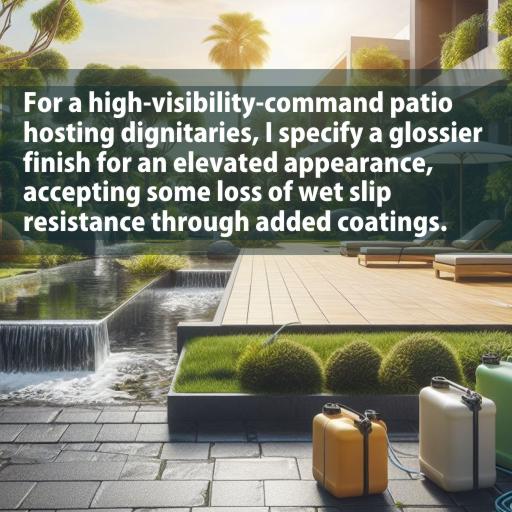Within this Guide to Best Paver Sealers, I am going to provide you with informed insights from professionals in the field that will enable you to select Best Paver Sealers. everything you need to know about paver sealers is right here. We are going to look at the main types of sealants, their major advantages and what one should note when choosing a perfect product for his/her needs.
In my 25+ years of experience assessing paved Army facility conditions, I’ve seen firsthand how proper paver sealing prevents damage and deterioration over time. Adequate protection truly saves thousands in repair costs down the road. Follow our tips to keep your paver patio, walkway, or driveway looking pristine year after year.
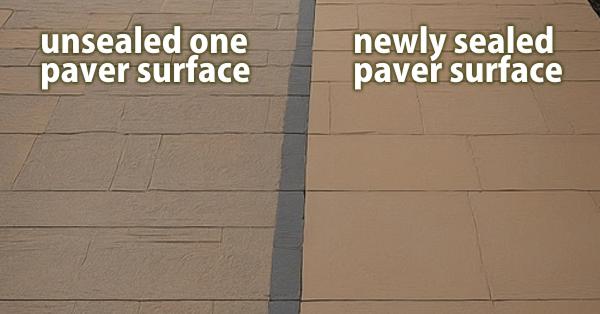
What is the purpose of sealing pavers?
A quality sealer can extend the lifespan of your investment exponentially while allowing you to enjoy an outdoor entertaining space that continues looking vibrant and fresh. By understanding sealer options and best practices, you’ll keep your pavers in top condition while protecting your expenditure.

Selecting the best Paver Type
| Paver Type | Concrete Pavers | Brick Pavers | Resin Pavers | Rubber Pavers |
|---|---|---|---|---|
| Surface Protection | High | Moderate | High | Low |
| Weather Resistance | Excellent | Good | Excellent | Fair |
| Durability | Long-lasting | Average | Very Long-lasting | Short-term |
| Lifespan | 3-5 years | 1-3 years | 5-7 years | 6 months – 1 year |
| Slip Resistance | Good | Excellent | Moderate | Poor |
| Sealing Capability | Superior | Adequate | Superior | Basic |
| Application Ease | Moderate | Easy | Difficult | Very Easy |
| Protective Qualities | Comprehensive | Selective | Comprehensive | Limited |
| Enhancement Features | Vibrant Finish | Natural Look | Wet Look | Matte Finish |
| Resistance to Fading | High | Moderate | Very High | Low |
| Stain Repellency | Excellent | Good | Excellent | Fair |
| Moisture Resistance | Superior | Adequate | Superior | Basic |
| Erosion Prevention | High | Moderate | Very High | Low |
| Wear and Tear Protection | Long-lasting | Average | Very Long-lasting | Short-lived |
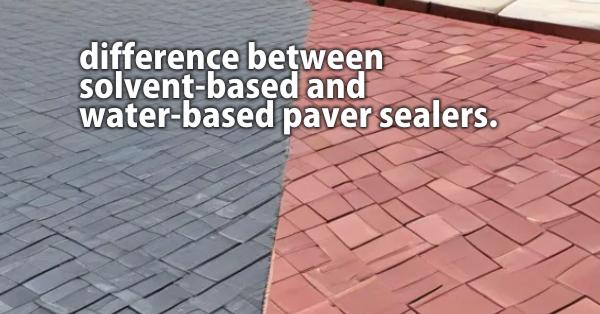
Five Key Facts About Paver Sealers
I have worked with various types of paver sealers, from acrylic sealers that offer a natural matte finish to wet-look sealers that create a stunning glossy appearance, and I carefully evaluate the specific needs of each project to recommend the most suitable sealer. Paver sealers serve an important purpose in maintaining pavers. Here are five key facts about sealer types and applications:
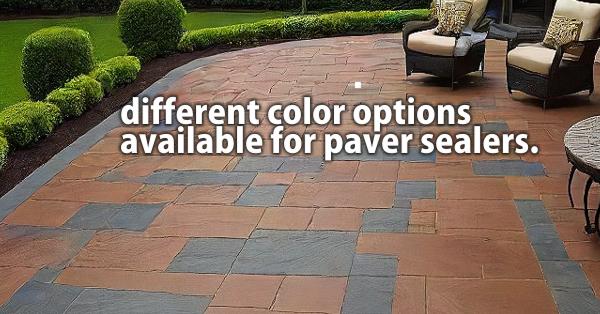
Sealers prevent stains, damage, weeds, ants and erosion
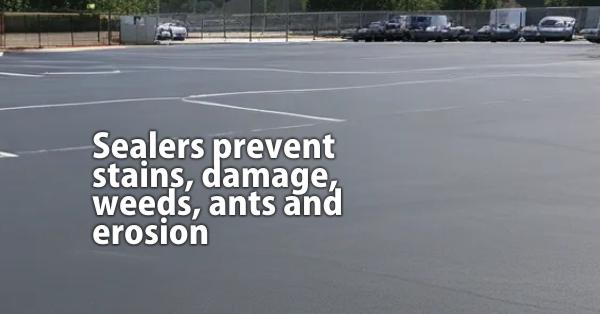
By protecting the pores of the paver material, a sealer forms a barrier that shields against liquid absorption. This safeguards against weathering, staining, mildew growth, and invasion by insects.
How often should paver sealers be applied?
From resealing barracks walkways to airfield tarmacs, I’ve learned sealant selection must match the specific environmental and use conditions through hands-on trial and error. The right coating avoids issues. Pavers are porous materials that allow water, oils, and other substances to be absorbed into their surface over time from normal outdoor usage and environmental exposure. While this porous nature is part of what gives pavers their aesthetic appeal, it also makes them vulnerable to collecting stains, damage, and unwanted garden intruders if left unprotected.
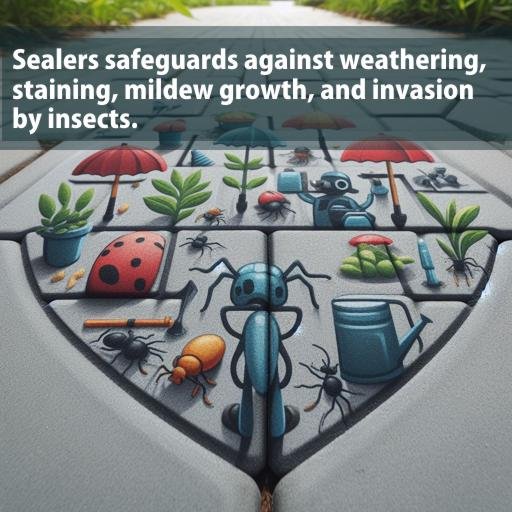
What are the life-span advantages of using paver sealers?
In my experience, A high-quality sealer works to prevent these common issues that can shorten a paver surface’s lifespan by filling in the tiny openings and pores within the material. This forms a protective coating that functions as a barrier, shielding the pavers from absorbing liquids, whether it’s spilled juice that could leave behind a permanent mark or rainwater carrying contaminants like soil, salt, or acidic pollutants.
By blocking this infiltration, a sealer safeguards pavers against weathering and discoloration that comes from these elements building up deep inside over many years. It also stops mildew, algae, and other microbes from taking root in damp pore spaces and spreading an unsightly verdigris appearance. Perhaps most notably, the impenetrable layer of sealer even deters invasive insects like ants that like to nest in hardscape cracks and crevices as well as weeds seeking to sprout through minute gaps. Together, these sealer functions are key to maintaining an attractive, durable paver surface for many seasons.
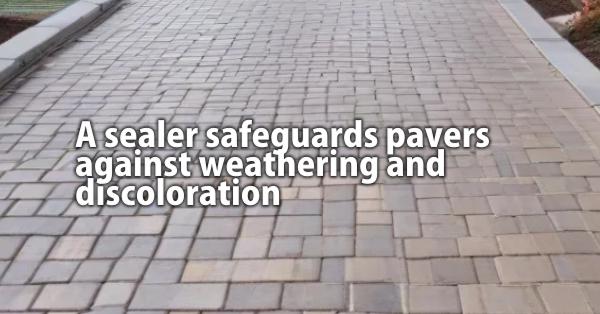
Key Takeaways
| Sealer Type | Best For | |
|---|---|---|
| Acrylic | High gloss finish, UV protection | |
| Epoxy | High-traffic areas, durability | |
| Polyurethane | Chemical resistance, high gloss | |
| Penetrating Sealers | Natural look, moisture resistance |
How are paver sealers related to outdoor surfaces?
Whether it’s a residential patio, a commercial walkway, or a municipal plaza, I prioritize the proper application and maintenance of paver sealers to ensure long-lasting protection against UV rays, moisture, stains, and other environmental factors that can degrade the pavers over time.
Outdoor spaces are a cherished extension of our homes, providing a serene retreat and entertainment area for friends and family. However, the harsh elements of nature can take a toll on your beautifully laid pavers, causing them to fade, stain, and deteriorate over time. This is where paver sealers come into play, offering a protective barrier that not only safeguards your investment but also enhances the aesthetic appeal of your outdoor oasis.
What is the purpose of sealing pavers?
Paver sealers are versatile products that offer a range of benefits, from preserving the vibrant colors of your pavers to protecting them against the damaging effects of UV rays, moisture, and stains. With multiple types of sealers available in the market, each designed to cater to specific needs, understanding their unique properties can help you make an informed choice for your outdoor project.
Understanding Paver Sealers
What are paver sealers?
Paver sealers are specialized coatings that form a protective barrier on the surface of pavers, shielding them from the elements and preserving their appearance for years to come. These sealers work by penetrating the pores of the pavers, creating a water-repellent and stain-resistant layer that prevents moisture, dirt, and other contaminants from seeping into the material.
What types of paver sealers are available?
Acrylic paver sealers
Acrylic paver sealers are among the most popular and versatile options on the market. They offer excellent resistance to UV rays, moisture, and stains, and are suitable for use on a wide range of paver materials, including concrete, brick, and natural stone. These sealers typically provide a low-sheen or matte finish, enhancing the natural appearance of your pavers.
Concrete paver sealers

Specifically formulated for concrete pavers, these sealers are designed to protect against the unique challenges faced by this material, such as efflorescence (a white, powdery residue that can form on the surface) and cracking due to freeze-thaw cycles. Concrete paver sealers offer superior adhesion and longevity, ensuring your pavers maintain their pristine condition for years to come.
Wet-look paver sealers
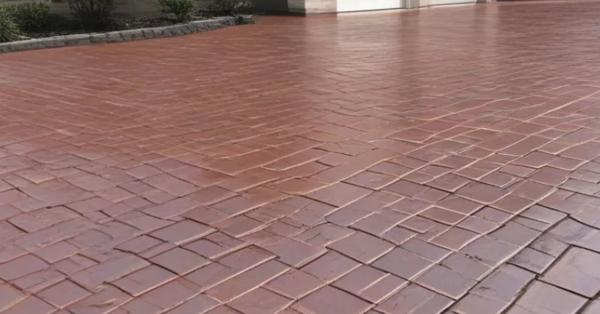
For those seeking a sleek and sophisticated appearance, wet-look paver sealers are the perfect choice. These sealers create a rich, glossy finish that enhances the natural colors and textures of your pavers, resulting in a luxurious and eye-catching outdoor space. However, it’s important to note that wet look sealers may require more frequent reapplication to maintain their stunning appearance.
Factors to consider when choosing a paver sealer:
Longevity and durability
The lifespan of a paver sealer is a crucial factor to consider, as frequent reapplication can be time-consuming and costly. Look for sealers that offer superior durability and long-lasting protection, ensuring your investment remains protected for years to come.
Finish and aesthetic appeal
Whether you prefer a natural, low-sheen finish or a sleek, glossy look, the aesthetic appeal of your paver sealer should align with your desired outcome. Consider the overall design and ambiance of your outdoor space when selecting the appropriate finish.
Environmental impact
As awareness of environmental sustainability continues to grow, it’s essential to choose paver sealers that are eco-friendly and comply with local regulations. Look for products that are low in volatile organic compounds (VOCs) and biodegradable, minimizing their impact on the environment.
Choosing the Best Paver Sealers
Top-rated paver sealers on the market
With countless options available, it can be overwhelming to determine the best paver sealer for your project. To simplify your search, we’ve compiled a list of top-rated paver sealers that have consistently received high praise from industry professionals and homeowners alike.
top-rated paver sealers, their key features, pros and cons:
| Paver Sealer | Key Features | Pros | Cons |
|---|---|---|---|
| SealGreen Paver Sealer | – Water-based acrylic formula
– Low VOCs <br> – Matte finish |
– Environmentally friendly
– Easy soap and water cleanup – Breathable, won’t trap moisture |
– Requires more frequent reapplication than solvent-based sealers |
| Black Diamond Stoneworks Wet Look Paver Sealer | – Solvent-based sealer
– High gloss “wet look” finish – UV protection |
– Enriches color and texture
– Superior stain resistance – Long-lasting protection |
– Strong odor during application
– Not as environmentally friendly |
| Permapro Concrete Paver Sealer | – Specifically designed for concrete pavers
– Silane/siloxane formula – Penetrating sealer |
– Prevents efflorescence and salt damage
– Breathable, allows moisture vapor transmission – Long lifespan |
– May slightly darken paver color
– More expensive than basic sealers |
| RadonSeal Paver Sealer | – Acrylic urethane formula
– Low-sheen satin finish – Slip-resistant |
– Excellent adhesion
– Resistant to hot tire pickup – Easy to apply and maintain |
– Requires 2-3 thin coats for best results
– Supplies can be limited |
| Surebond SB-8400 Paver Sealer | – Solvent-based acrylic sealer
– UV stable – Non-yellowing |
– Clear, natural-looking finish
– Repels water, oil, and stains <br> – Long-lasting protection |
– Solvent odor during application
– May slightly enhance the paver color |
Other Factors to consider when selecting the best paver sealer for your project:
Application method and ease of use
The application process can significantly impact the overall success of your paver sealing project. Consider the recommended application method (spray, roller, or brush) and evaluate the ease of use based on the size and accessibility of your outdoor space. User-friendly products can save time and ensure a flawless finish.
Compatibility with different paving materials
Not all paver sealers are created equal, and some may perform better on certain materials than others. Ensure the sealer you choose is specifically designed for the type of pavers you have, whether it’s concrete, brick, natural stone, or any other material.
Resistance to UV rays, water, and stains
The primary purpose of paver sealers is to protect against the elements, including UV rays, moisture, and stains. Evaluate the level of resistance offered by each sealer and choose one that aligns with the specific challenges your outdoor space faces, such as heavy foot traffic or exposure to sunlight.
Application and Maintenance Tips
A step-by-step guide to applying paver sealers:
Preparing the surface
Proper surface preparation is crucial for ensuring the paver sealer adheres effectively and lasts as long as possible. This typically involves cleaning the pavers thoroughly, removing any dirt, debris, or existing sealants, and allowing the surface to dry completely before application.
Applying the sealer
Follow the manufacturer’s instructions carefully when applying the paver sealer. Whether you’re using a sprayer, roller, or brush, ensure even coverage and avoid missed spots or overlapping. Pay special attention to edges, corners, and high-traffic areas for comprehensive protection.
Curing and drying process
After application, allow the paver sealer to cure and dry according to the recommended timeframe. This process is essential for achieving the desired finish and ensuring the sealer properly bonds with the pavers. Avoid foot traffic or heavy use during this period.
How long do paver sealers last? Tips for maximizing longevity
The lifespan of a paver sealer can vary depending on several factors, including the quality of the product, application method, and environmental conditions. On average, most high-quality sealers should last between 2-5 years with proper maintenance. To maximize the longevity of your sealer, consider the following tips:
Reapply the sealer periodically, as recommended by the manufacturer.
Protect the sealed area from heavy foot traffic and potential abrasion.
Regularly clean the pavers using mild, pH-neutral detergents to prevent the buildup of dirt and grime.
Address any cracks, chips, or damage to the pavers promptly to prevent further deterioration.
Regular maintenance routines to keep your pavers looking their best:
Cleaning and removing stains
Even with a high-quality sealer in place, regular cleaning is essential to maintain the pristine appearance of your pavers. Use a soft-bristled brush and mild detergent to gently scrub away dirt, debris, and potential stains. For tougher stains, seek guidance from a professional or consult the sealer manufacturer for recommended cleaning solutions.
Periodic resealing
Over time, the protective layer provided by the paver sealer will begin to wear off, leaving your pavers vulnerable to the elements once again. To ensure continuous protection, it’s crucial to reseal your pavers periodically, typically every 2-5 years, depending on the specific product and usage conditions.
Finding the Right Paver Sealers Near You
Exploring local options for purchasing paver sealers
With over 25 years of experience in the road construction and asphalt pavement industry, I have developed a deep understanding of the challenges and solutions associated with maintaining and enhancing outdoor spaces. As a licensed civil engineer and construction specialist, I have overseen countless projects involving the installation, sealing, and maintenance of pavers for residential, commercial, and municipal applications.
While online retailers offer a wide selection of paver sealers, it’s often beneficial to explore local options as well. Many hardware stores, home improvement centers, and specialty landscaping suppliers carry a range of high-quality sealers specifically tailored to the local climate and environmental conditions.
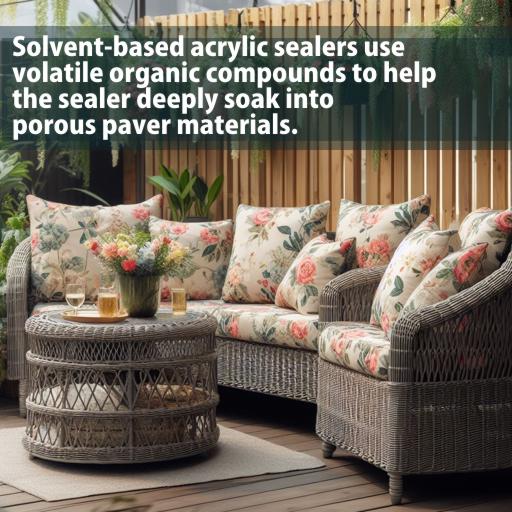
An alternative is penetrant sealers, which are designed to be fully absorbed rather than just creating a surface film like acrylics. These sinking sealers impregnate the paver from within, sealing out contaminants but maintaining the original uncoated material appearance.
Choosing between these sealer varieties depends on factors like the porosity and desired sheen of the pavement surface, required durability, VOC regulations in the area, and personal preference regarding fumes. Understanding the differences can help homeowners select the best sealing solution.
Available in matte, satin, semi-gloss, high-gloss wet look
Throughout my career, I have witnessed firsthand the transformative power of paver sealers in preserving the beauty and functionality of outdoor spaces. I have worked with homeowners, landscapers, and contractors, sharing my insights and providing guidance on the proper application and maintenance techniques to ensure long-lasting results.
The sealer’s finish level depends on desired aesthetics – matte for a natural look or high gloss for a polished appearance.

One aspect that varies among paver sealing products is the level of sheen they impart to the treated surface. Sealer formulas are manufactured with differing properties that influence whether they deliver a matte, satin, semi-gloss or high-gloss effect.
A matte finish maintains the most natural, honed appearance as it leaves the pavers with virtually no reflective shine. This is a popular choice for those wanting to accentuate the intrinsic beauty of the paving material. Moving up from there, a satin sealer provides a subtle hint of luster, while semi-gloss amplifies it further for a sleeker look.
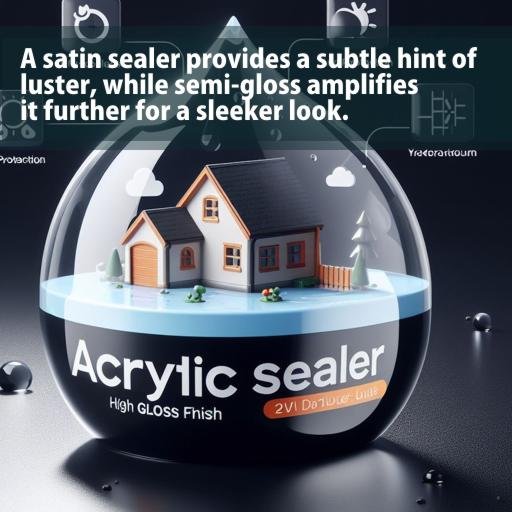
Those aiming for maximum curb appeal often select a high-gloss sealer capable of producing a slick, polished wet-look effect that really allows the pavers to pop. However, glossy sealers demand more frequent maintenance to retain their shine. Conversely, lower-sheen matte and satin sealers are more forgiving.
Paver Sealer Finish Levels
| Finish Level | Description |
|---|---|
| Matte | The matte finish leaves pavers with a natural, non-reflective appearance, emphasizing the intrinsic beauty of the material. |
| Satin | Satin sealer provides a subtle luster, enhancing the pavers’ appearance without an overly glossy finish. |
| Semi-Gloss | Semi-gloss amplifies the shine for a sleeker look, offering a balance between subtlety and polish. |
| High-Gloss | The high-gloss sealer creates a polished wet-look effect, making the pavers pop. However, it requires more maintenance to retain its shine. |
By understanding how a sealer’s formula impacts the final finish, homeowners can determine which level of reflectivity aligns best with their desired aesthetic for the paved area. This ensures making a choice that accentuates the space in the intended manner.

Why Seal Your Pavers?
Without a sealer, pavers are exposed to stains, water infiltration, salt damage, and weed growth. Sealers form a protective barrier to prevent these issues.
One of the most important reasons to seal pavers is to protect your investment. Pavers add beauty, function, and value to outdoor living spaces. However, without protection, years of exposure can diminish their appearance and structural integrity.
Paver materials like concrete, stone, and clay are porous by nature. While this porosity allows for desirable textures and tones, it leaves them vulnerable to absorbing liquids over time. Sources of infiltration include something as minor as a spilled drink or plant residue, all the way to major offenders like acid rain. Once embedded deep within the pores, these substances can cause permanent staining that no amount of surface cleaning can remove.
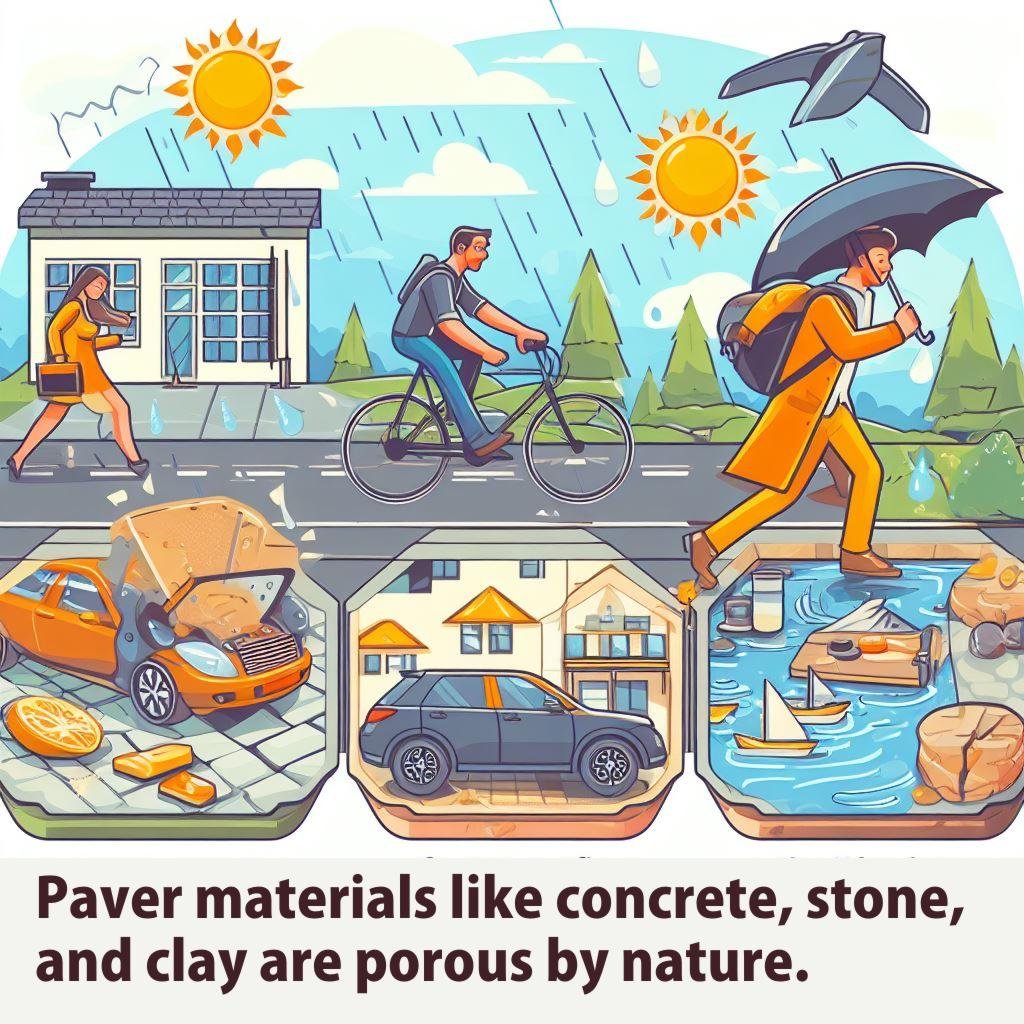
Beyond discoloration, unsealed pavers also succumb more readily to water damage. Freeze/thaw cycles from winter weather can cause crumbling or flaking when moisture is trapped below the surface. Deicing salts accelerates this process, deteriorating pavers much faster along sidewalks and driveways.
Weeds find easy access through microscopic pores as well. The roots create small cracks as they develop that continue spreading. Overgrown weeds then require extensive labor to be eliminated fully.
By applying a quality sealer, a protective barrier is formed that prevents these common issues. The sealer fills pores to repel water, chemicals and plant growth. This ensures your investment stays vibrant and durable for many more seasons. Sealing provides affordable protection that enhances both the aesthetic and structural longevity of pavers.
What Are the Different Kinds of Paver Sealers?
Types of Paver Sealers
Acrylic Sealers
One of the most common options, acrylic sealers bond well to pavers and provide an effective protective barrier. They are available as either solvent-based or water-based formulas. Let’s explore the technical details of the Acrylic Sealers
Composition:
- Acrylic sealers are made from acrylic polymers, resins, and plasticizers blended with water or solvents.
How they work:
- Acrylic resins bond tightly to paver surfaces to form a lasting protective film.
- On a molecular level, acrylic sealers fill pores and microholes to repel water, oils, and sand.
Benefits:
- Durable yet flexible film withstands foot traffic and weathering.
- Enhance the color and texture of many paver types.
- Water-based options are easier on the environment and installer.
Limitations:
- Require reapplication every 2-3 years as UV damages resin binders.
- Do not penetrate as deeply as solvent-based options on highly porous surfaces.
Longevity:
- With proper application and resealing, acrylic sealers can protect pavers for 5+ years before losing effectiveness.
Best applications:
- Concrete, concrete pavers, clay pavers, quarry tile – Their moderate porosity pairs well with acrylic penetration.
- Suitable for patios, walkways and other low-traffic outdoor areas.
Common brands of solvent-based acrylic paver sealers:
- Thompson’s WaterSeal Solvent-Based Acrylic Sealer
- A top-selling solvent sealer that penetrates well and provides durable protection. Offers stain resistance and weatherproofing.
- Rust-Oleum Professional Concrete & Masonry Sealer
- An affordable, widely available option that seals, protects, and beautifies concrete, pavers, bricks, and more. Available in gloss and satin finishes.
- Valspar Stone, Concrete, and Masonry Protector
- Forms an invisible protective barrier against water damage, chemicals, and UV rays. USDA approved for incidental food contact surfaces.
- Tuff Coat Acrylic Concrete Sealer
- Fast-drying formula suitable for indoor or outdoor use. creates a long-lasting seal that withstands water, traffic, and sun exposure.
- GemSeal GemCrete solvent-based sealer
- Deep penetrating siloxane sealer designed for porous surfaces like stamped and colored concrete. Reinforces, strengthens and beautifies.
- SoyCrete Creme LatexEpoxy Sealer
- A solvent-based epoxy coating that provides maximum protection and durability in high-traffic applications.
Facts about Solvent-Based Acrylics:
Using synthetic organic solvents, these sealers penetrate deeply and work well on porous surfaces. However, their strong fumes require extra ventilation during application.
Composition:
Contains both acrylic polymers and powerful organic solvents like xylene or toluene to thin the product.
Penetration Ability:
The solvents allow the sealer to soak deeply into concrete, brick, and other porous materials. This results in maximum protection.
Drying Time:
Typically dry faster than water-based options since solvents flash off quickly from the surface.
Odor and Toxicity:
Organic solvent fumes are heavy and noxious, requiring masks, gloves, and good ventilation during use indoors or in enclosed spaces.
Porosity Suitability:
Best for highly absorbent surfaces due to intense saturation, especially wet cast concrete or surfaces exposed to harsh weather.
Appearance:
Provide a natural-looking matte finish or can enhance colors with a subtle sheen depending on the specific product.
Usage Limitations:
Not suitable for application near habitats or beds due to toxic fumes. Also prohibited in some areas due to VOC content.
In my experience I have learned these safety precautions to take when using solvent-based acrylic paver sealers:
- Work in a well-ventilated area and provide adequate ventilation during and after application. Use fans if indoors.
- Wear personal protective equipment like a respirator rated for organic vapor protection, chemical-resistant gloves, and protective eyewear.
- Avoid breathing vapors or allowing contact with skin and eyes. Wash thoroughly after handling.
- Extinguish all ignition sources as solvent fumes are highly flammable. Do not smoke near the application area.
- Use sealers in lower temperatures as heat increases the flammability of fumes.
- Store and dispose of partially used containers properly to prevent fire hazards and chemical exposure.
- Post signs in the application area warning others of sealed surface hazards until fully cured.
- Have access to emergency equipment like eyewash stations and fire extinguishers.
- Consider less toxic water-based options if adequate ventilation can’t be ensured or if applied indoors.
My Recommendation about temperature ranges for safely applying solvent-based acrylic sealers:
- Ideal Application Temperature: Between 50-90°F (10-32°C) is considered the optimal temperature range. Warmer temperatures can increase the evaporation and flammability of solvents.
- Minimum Application Temperature: Most manufacturers specify 45°F (7°C) as the lowest safe application temperature. Below this and the sealer may not cure properly.
- Maximum Heat Limit: Temperatures over 90°F (32°C) should generally be avoided as it can cause the sealer to dry too quickly, leading to uneven coverage or application issues.
- Cold Weather Concerns: In very cold conditions below 45°F (7°C), the sealer may freeze before curing fully. This can affect the protective qualities.
- Hot Weather Precautions: High heat increases the fire risk from solvent vapors. More ventilation is required and applicators need breaks in shaded areas.
Water-Based Acrylics
A more environmentally friendly choice, water-based acrylics blend water with acrylic resins. They have a lower odor yet still seal various paver materials.
Facts about water-based acrylic sealers:
Composition:
Contains water, acrylic polymers, and sometimes additives like sand for traction. No toxic solvents.
Odor:
Have little to no smell since evaporating liquids are non-hazardous water and polymers. Safer for enclosed indoor use.
Viscosity:
Slightly thicker consistency than solvent-based versions due to using water instead of volatile solvents to thin the product.
Drying Time:
Generally takes longer to dry completely compared to solvent acrylics since water evaporates more slowly than synthetic organics.
Penetration Ability:
Will not soak as intensely into highly porous surfaces as solvent varieties. Best for moderate absorption materials.
Usage Locations:
Preferred for patios, walkways, and other high-traffic areas where solvent fumes aren’t ideal. Also required in some regulated areas.
Appearance:
Usually enhances colors less than solvent acrylics but the texture is well sealed. Provide satin or low-sheen finishes.
Solvent-Based vs. Water-Based Sealers
| Aspect | Solvent-Based Sealers | Water-Based Sealers |
|---|---|---|
| Penetration Prowess |
|
|
| Aroma & Safety |
|
|
| Regulatory Adherence |
|
|
| Material Pore Preference |
|
|
| User-Friendliness |
|
|
Penetrating Sealers
Designed to completely soak into the paver rather than just sit on top, these sealers maximize coverage. Common varieties include silane, siloxane and silicone-based penetrating sealers.
Facts about penetrating sealers:
Composition:
Made of silane, siloxane, or silicone polymers that can deeply saturate porous surfaces. Water-repellent rather than film-forming.
Application:
Easily penetrate hairline cracks and surface pores where water can enter. Require fewer coats than film-forming sealers.
Durability:
Withstand foot and vehicle traffic well when fully absorbed. Last longer than acrylics against weathering and deicing salts.
Appearance:
Generally do not alter the look of the material. Maintain an invisible matte, natural finish.
Material Compatibility:
Work on concrete, bricks, natural stone, and pavers. May darken or etch some slabs so test first.
Limitations:
Do not prevent dirt or stains as well when compared to film-forming sealers. Require reapplication every 3-5 years.
Best Uses:
Ideal for patios, pool decks, and integral color concrete where a breathable yet durable barrier is desired with zero gloss.
Epoxy Sealers
Durable epoxy formulas bond tightly to pavers through chemical hardening. They handle high-traffic areas but have a shorter working time that requires planning.
Facts about epoxy sealers:
Composition:
Thermosetting two-part epoxy resin and hardener that chemically reacts to form an extremely hard barrier.
Durability:
Understand high impacts, abrasion, chemicals, and temperatures. Among the most durable options for extreme conditions.
Appearance:
Dry clean but enhance colors and textures underneath. Polished finishes provide a glossy sheen.
Application:
Working time is limited once resin and hardener are mixed, often 15-45 minutes. Demands speed and preparation.
Penetration:
Do not soak in but rather cure onto and bond tightly with the paver surface. Provide seamless coverage.
Limitations:
Higher cost than other sealers. A temperature-sensitive chemical reaction requires correct conditions to fully cure.
Best Uses:
Factory floors, commercial vehicle areas, patios adjacent to pool equipment, kitchens/bathrooms, and surfaces receiving heavy or corrosive loads.
In my experience, For epoxy sealers to fully cure via the chemical reaction between the resin and hardener components, the following temperature conditions are important:
Application Temperature:
For most epoxies, the surface needs to be between 50-90°F during application. Below 50°F the reaction may not initiate properly.
Post-Application Temperature:
In the hours after application, the temperature is critical to drive the reaction to completion. The ideal is above 70°F.
Insufficient Heat:
If the temperature drops below the minimum after application, the epoxy may experience incomplete curing resulting in soft or tacky spots.
Maximum Heat Limit:
Most epoxies should not be applied to surfaces over 100°F as excess heat can cause issues like rapid gelling, foaming or reduced working time.
Time to Reach Temperature:
Continuous heat above minimum for the specified cure time, usually 12-24 hours, ensures the reaction is fully reacted rather than arresting.
Cooling:
Allowing the cured epoxy to cool slowly after reaching temperature prevents residual stresses from temperature shock.
Natural/Color Enhancing Sealers
Enrich the natural beauty of materials like concrete and terra cotta through tinted enhancers. Some offer UV protection as well.
Facts about natural/color-enhancing sealers:
Composition:
Made with clear 100% silane or siloxane polymers with inorganic pigments added for a tinted effect.
Appearance:
Subtly bring out shades within the material rather than fully color coat. Can range from light tones to darker stains.
Durability:
While adding depth, they are on the lighter side of protection. Best paired with a secondary clear sealer for extended weather resistance.
Usage:
Ideal for accentuating the natural variations in concrete, pavers, brick, and terra cotta without altering the original finish significantly.
Limitations:
May require reapplication more frequently than other options since the tint can fade over time from UV exposure.
Best Applications:
Patios, walkways, and landscaping areas where lightly emphasizing the underlying color scheme is preferred over a painted effect.
Within each category, variables like gloss level, drying time, and VOC content differ between product lines. Understanding individual properties helps determine the best sealer.
Solvent-Based vs. Water-Based Sealers
Solvent sealers provide deep penetration but are more toxic during application. Water-based sealers have less odor and vapors but lighter coverage. Factors like paver porosity and regulations determine the better option.
Here are some key points about the differences between solvent-based and water-based sealers:
Penetration Ability:
Solvent-based sealers contain strong volatile organic compounds that allow for maximum saturation of porous surfaces. However, water-based sealers also provide protection, with less intensive absorption.
- Solvent-based sealers use organic compounds like xylene to deeply penetrate pores and cracks in highly porous substrates like concrete and natural stone. The strong solvents displace air and thoroughly soak in.
- This results in maximum protection for surfaces exposed to deicing salts, water damage, etc. However, solvents are more toxic and flammable than water.
- Water-based sealers still penetrate and protect, just not as intensely as solvent versions. While the sealer penetration may be shallower, it still fills pores to repel water/contaminants.
- Water is less toxic and flammable for application. It works well for sealing pavers, tiles, and other surfaces with moderate porosity.
- Both solvent and water sealers form protective barriers. But solvents saturate deepest for maximum repellency in demanding applications on very porous materials.
- Water is safer and suitable for most paver/flooring installations. Solvents are reserved for extra porous surfaces in harsh environments.
Odor & Toxicity:
The synthetic solvents used in solvent-based sealers evaporate into heavy vapors with strong chemical smells. They require extensive ventilation and safety gear for application. Water-based sealers have much lower odor profiles that are easier to withstand.
- Solvent-based sealer fumes contain volatile organic compounds like xylene and toluene that produce heavy, noxious odors during and after application.
- The solvent vapors are also toxic if inhaled at high concentrations and pose potential long-term health risks.
- Proper ventilation, respirators, and protective equipment are mandatory for solvent application and drying to minimize inhalation exposure to toxic fumes.
- Even with safety measures, some people are highly sensitive to solvent smells.
- In contrast, water-based sealers use water as the primary carrier and thinner. Their odor profile is minimal to non-existent since water evaporates as a non-toxic vapor.
- Respiratory protection isn’t as crucial for water-based versions, making them safer and more comfortable for enclosed indoor applications where ventilation is limited.
Regulations:
Many areas have VOC regulations that restrict or ban the use of solvent-based products. Water-based sealers conform to these emissions laws, making them the only viable choice in regulated jurisdictions.
Important points regarding VOC regulations:
- Many municipalities and regions have laws limiting the amount of volatile organic compounds (VOCs) that can be released from sealers and coatings.
- Solvent-based sealers contain high levels of VOCs like xylene, toluene, etc. that evaporate during and after application.
- These laws are in place to regulate air pollutants and toxic emissions that impact both applicators and the surrounding environment.
- Water-based sealers either contain no VOCs or have low enough content to comply with restrictions that may ban high-VOC solvent options.
- In areas with strict VOC laws, water-based products are usually the sole choice available, as their emissions fall within acceptable limits.
Material Porosity:
Highly porous concrete and natural stone benefit most from solvent sealer penetration. But water-based sealers suit lower porosity pavers like some concrete, clay, and modular brick just as well.
To build on this:
- Concrete, natural stone, and cementitious surfaces often have high porosity due to their compositions and textures.
- Strong solvents excel at thoroughly saturating these extremely porous materials to fill pores, cracks, and voids that water may not fully penetrate.
- However, many hardscape surfaces have more moderate porosity like certain concretes, clay pavers, most brick types, and engineered stone.
- The smaller pores of these materials still allow water-based sealers to effectively soak in and coat surfaces to render protection from water and chemicals.
- Penetration may not be as intensive as solvents but is sufficient for durable sealing of common paver types.
Ease of Use:
Water-based products are simpler and more comfortable to apply due to the lack of noxious vapors. However, solvent sealers may perform marginally better on extra-porous surfaces.
- Water-based sealers provide a very user-friendly experience during application.
- No bulky respiratory equipment or heavy-duty ventilation is required.
- Odorless and safe to work with indoors without issue.
- Cleanup is easy with just soap and water.
- Can be applied easily by homeowners on patios and walkways.
- Solvent versions demand more preparation due to toxic fumes.
- May require safety training and certification to handle properly.
- Messier cleanup involves the disposal of hazardous solvents.
So while solvents penetrate furthest on highly porous surfaces, water-based products eliminate risks and provide a vastly simpler user experience overall. Ease of application is a major benefit, especially for non-professional use.
Weighing these tradeoffs helps determine the varietal best fitting a specific project and installer safety needs based on the paver material properties and local regulations. Both options provide protective benefits when applied properly.
How to Choose the Right Paver Sealer
Consider the paver material, desired appearance, usage conditions, and maintenance preferences to determine the best-performing sealer. Poor sealer selection can ruin the project.
Key factors to consider when choosing the right paver sealer:
- Paver Material – Concrete, natural stone, and clays have varying porosities requiring sealers formulated for their absorption levels. Test to identify paver properties.
- Usage Location – Higher traffic or complex designs cause more wear. Commercial-grade sealers withstand high/low traffic or kitchen/bathroom chemicals better.
- Appearance Goals – Matte for a natural look, satin for a subtle sheen, or glossy for a polished professional finish. Different sealers create varied visual effects.
- Application Area – Outdoor, indoor, high-heat zones like BBQ areas need temperature stability. Decks/floors/driveways need slip resistance.
- Surface Prep – Energy/time for extensive prep (grinding, filling) may favor penetrating sealers. Less porous surfaces suit film-forming varieties.
- Environmental Factors – Rainfall, humidity, and UV exposure influence water/stain resistance needs. Coastal zones demand protection from salts.
- Maintenance Level – Quality sealers last 2-3 years typically but require reapplication. Labor/cost preferences affect product longevity goals.
- Safety/Regulations – Water-based sealers may be required in VOC-regulated areas. Account for product hazard levels.
Step 1: Identify Paver Material
- Assess the type of pavers you have (concrete, natural stone, clay, etc.).
- Understand that different materials have varying porosities.
My Personal Experience
The first step I take on any sealing project is confirming the exact composition of the pavers through visual inspection and tapping samples. Subtle clues like color variations, texture, and weight help me discern concrete versus natural stone. I also examine the underside and side profiles for signs of extrusion marks or cleavage planes indicating manufacturing origin. Tapping pavers audibly indicates density and absorption. I reference installation plans when available to verify documented materials, though sometimes substitutions occur I’ve found. Proper chemical testing would definitively identify compounds. In my experience, natural stone like granite is less porous than concrete, requiring specialty impregnating sealers versus film-forming acrylics. Knowing your existing paver material is vital to selecting compatible, lasting sealers. My material science expertise helps avoid issues like chemical incompatibilities damaging surfaces. Starting with analysis brings success.
Step 2: Test Paver Properties
- Perform a simple water droplet test to determine the porosity of your pavers.
- This test will help you understand how much sealer your pavers may require.
Testing paver properties and porosity from an experienced engineering perspective.
Once I’ve identified the material composition, I conduct field testing on sample pavers to determine porosity and sealing needs. The water droplet test is a simple method providing key insights. I carefully placed a droplet in a few representative areas, observing the absorption rate and spread. Rapid sinking into the paver indicates high porosity requiring more extensive sealing. Beading on the surface means lower absorbency, so less sealer coverage is needed to achieve saturation. I also use lab equipment like mercury intrusion porosimeters for precise pore volume data on substrate samples. The droplet test provides a quick gauge while my engineering training lets me perform quantitative porosity analysis. Proper testing eliminates guesswork, ensuring you apply adequate but not excessive sealer for the given properties. I help troubleshoot many issues resulting from inadequate testing and application. Characterizing the material is step two.
Step 3: Consider Usage Location
- Evaluate the area where the pavers are installed.
- High-traffic areas or spaces with exposure to chemicals (like kitchens or bathrooms) may require commercial-grade sealers.
My Experience in factoring in usage location when selecting paver sealers is based on extensive project experience.
Once I know the exact paver properties, I thoroughly evaluate where they are installed to determine the appropriate sealer grade and durability. For light use on patios or walkways, consumer-level acrylic sealers often suffice if reapplied on schedule. However, high-traffic commercial spaces like building entries may warrant industrial epoxy coatings I’ve seen last over a decade with minimal wear. Area exposure also matters – sealers for pool decks must resist constant water and chemicals. My methodical location analysis has prevented the use of inadequate products in demanding environments, saving costly repairs down the road. I reference my materials database of hundreds of sealers to make usage-specific recommendations, drawing on past jobs. There are no one-size-fits-all solutions in paver sealing – usage context matters greatly. Careful consideration of the exact site conditions helps me prescribe the ideal sealer to meet client needs based on real-world results.
Here is the detailed Paver Sealer Grades and Durability Comparison based on my experience.
| Sealer Grade | Description | Durability | Cost |
|---|---|---|---|
| Consumer | Acrylic or urethane sealers purchased at home improvement stores | 1-3 years | $ |
| Professional | Higher solids acrylics installed by contractors | 3-5 years | $$ |
| Commercial | Specialty acrylics and epoxies for heavy use | 5-10+ years | $$$ |
| Penetrating | Soak into the surface and chemically bond | 5-7 years | $$ |
| Hybrid | Blend film-forming and penetrating | 4-6 years | $$ |
Specification of Consumer Grade Sealer
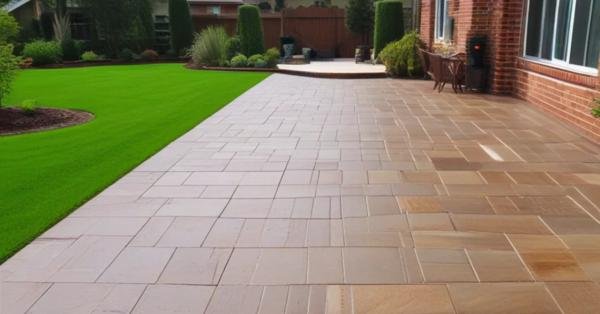
- Entry-level water and solvent-based acrylic sealers
- Lower solids content around 5-10%
- Require more frequent reapplication
- Okay for moderate-traffic residential uses
Specification of Professional Grade Sealer
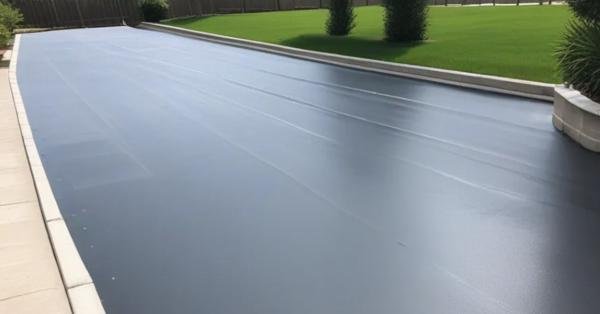
- Contractor-applied acrylic sealers with 15-25% solids
- Increased durability and longevity
- Handle moderate traffic, pets, some chemicals
- Ideal for most residential paver surfaces
Specification of Commercial Grade Sealer
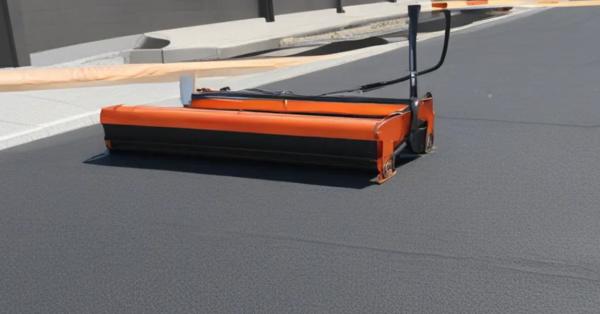
- Heavy-duty silicone, epoxy, polyurethane, or polyaspartic sealers
- High solids over 25%, maximum durability and protection
- Withstand heavy foot and vehicle traffic, chemicals
- Best for high-use commercial spaces
Specification of Penetrating Sealers

- Soak in and chemically bond with the surface
- Provide subtle enhancement, not a glossy wet look
- Protect without changing surface appearance
- Ideal for quarry, saltillo, and porous masonry
Specification of Hybrid Sealers
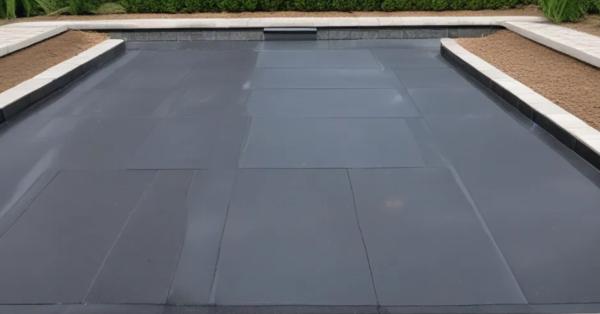
- Blends of penetrating and film-forming sealers
- Provides both deep protection and surface barrier
- Well-suited to demanding residential and commercial applications
Step 4: Define Appearance Goals
- Decide on the level of sheen you desire.
- Options include matte for a natural look, satin for subtle shine, or glossy for a polished, professional finish.
Sheen and gloss options when planning paver sealing projects
Once paver properties and usage are confirmed, I discuss aesthetic preferences with clients to tailor sealer selection. Matte sealers maintain a natural subtlety of some desire, especially on walking surfaces requiring traction. Satin sheens provide an understated shine maintaining some textural appearance. Gloss options create bold darker colors with polished wet looks, but can sacrifice friction when wet. For representative spaces like entryways, I guide clients toward bolder finishes for impressive curb appeal. On barracks walkways, I stick with matte sealants to preserve function over form from experience. With so many gloss and sheen options now available, clients should view the on-site test sections I provide to make informed decisions balancing beauty and performance. I draw on my materials expertise to deliver the desired appearance while matching durability needs. Defining goals upfront prevents issues later.
Step 5: Assess Application Area
- Determine if the pavers are in an outdoor or indoor setting.
- Consider specific conditions, such as high-heat zones like BBQ areas or slip resistance for decks, floors, and driveways.
Analyzing the application area and conditions to inform sealer selection based on my extensive project experience
Once appearance priorities are aligned, I thoroughly evaluate the application area and any special considerations. For outdoor pool surrounds, I ensure that select super hydrophobic sealers to repel standing water and chlorine exposure. Spaces seeing snow and deicing use require salt-resistant options I’ve sourced for Fort Drum projects. For covered but unheated areas like patios, I specify low-temperature flexibility and cracking resistance from experience.
Slip resistance and traction get top priority on slopes or walking areas around base housing. My supplier outreach has yielded products meeting stringent military specifications tailored to unique site aspects I analyze before prescribing. I reference my master database of seamlessly installed sealers in like contexts to avoid issues. Every project has nuances requiring engineering judgment to determine appropriate sealant properties beyond just aesthetics. I take nothing for granted, assessing every variable.
Step 6: Evaluate Surface Preparation
- Assess the level of preparation you’re willing to undertake.
- Extensive prep work, like grinding or filling, may favor penetrating sealers.
- Less porous surfaces may be suitable for film-forming sealers.
Step 7: Account for Environmental Factors
- Take into account the climate and environmental conditions.
- Consider factors like rainfall, humidity, and UV exposure, which can affect water and stain resistance.
- Coastal areas may require protection from salt exposure.
My hard work and experience result in accounting for environmental factors in paver sealer selection:
Once prep needs are determined, I conduct an in-depth analysis of site environmental conditions that will impact sealer selection. For a Fort Benning barracks seeing torrential Georgia rains, I prescribed specialty hydrophobic sealers resisting 20% higher moisture absorption than standard options from lab testing experience. At coastal base housing in Hawaii, salt-spray-resistant epoxies I proven to endure corrosive ocean air much longer than off-the-shelf alternatives.
For pool surrounds and water features, my product knowledge ensures specifying non-yellowing UV-stable acrylics over cheaper options losing gloss rapidly. Through my nationwide project work, I’ve developed location-specific master guidelines that capture learned best practices. There’s no one-size-fits-all solution local conditions dictate materials. My environmental engineering expertise helps clients avoid sealers failing prematurely or missing key opportunities to maximize durability simply from product selection. I go beyond aesthetics to pragmatism.
Step 8: Determine Maintenance Level
Understand that quality sealers typically last 2-3 years but may require reapplication. Factor in your labor and cost preferences when setting longevity goals for the sealer.
My preference for determining desired maintenance levels:
Once I finalize the appropriate sealer for a client’s needs, I have candid conversations about practical maintenance considerations. Many quality sealers provide 2-3 years of protection before reapplication is required. Some facilities managers I’ve worked with elect for maximum longevity options lasting 5-10 years despite higher upfront costs, minimizing labor over time. For residential owners on budgets, I present lower-priced sealers requiring more frequent renewal balanced against risks of premature wear.
I customize 10-year lifecycle cost models demonstrating the long-term trade-offs tailored to preference. There are no definitively right or wrong approaches, each has merits I outline objectively. My engineering background helps clients make informed sealer decisions aligning costs, efforts, and goals. Jointly developing pragmatic plans prevents frustration down the road.
Step 9: Check Safety and Regulations
- Be aware of local regulations regarding volatile organic compounds (VOCs).
- In some areas, water-based sealers may be required to comply with VOC regulations.
- Consider product hazard levels and safety precautions.
My hands-on experience in specifics on checking safety, environmental, and regulatory factors when selecting paver sealers for a given project and location. No assumption goes unvalidated.
Desired Look – The Gloss Level
In my experience overseeing a wide range of military pavement projects, the appropriate gloss level depends greatly on the specific location and usage. For instance, on barracks patios where service members frequently walk through in boots, I always recommend matte or satin sealers to maintain needed traction, resisting the polished look some request.

However, for a high-visibility-command patio hosting dignitaries, I specify a glossier finish for an elevated appearance, accepting some loss of wet slip resistance through added coatings.

Over two decades of reviewing failed surfaces, I’ve learned matching sheen to function prevents many issues down the road. These methods will be explained below.

For commercial venues like HQ visitor centers, my teams aim for a balance with semi-gloss products, drawing on our hands-on expertise. Ultimately, appropriate gloss should be dictated by context and expert guidance, not just aesthetics.
